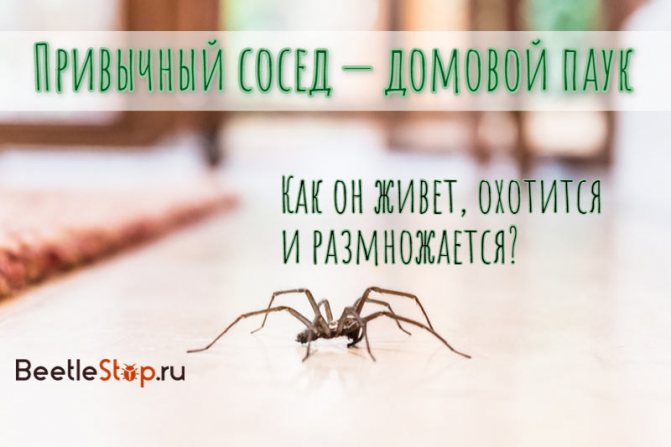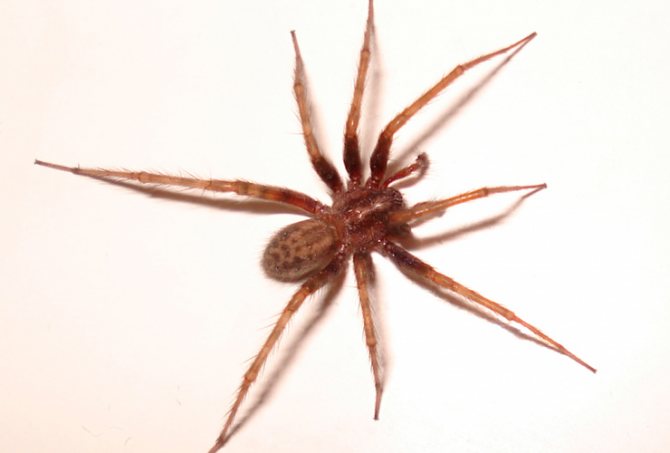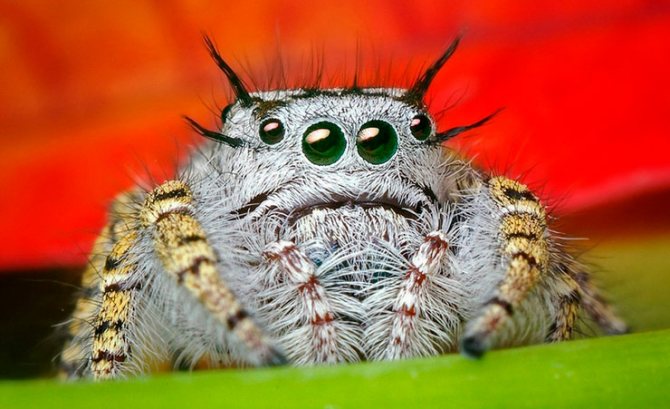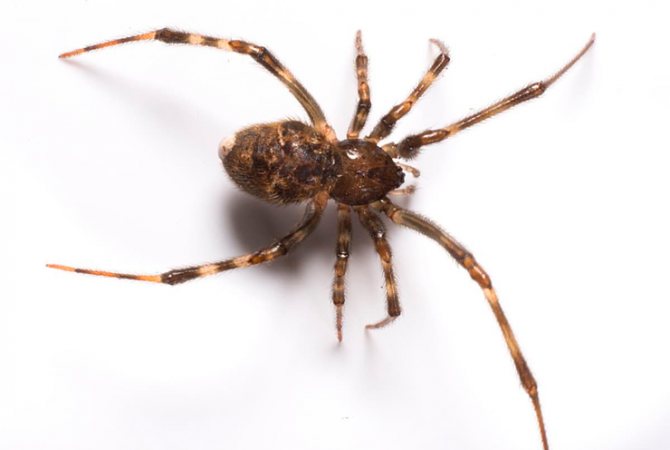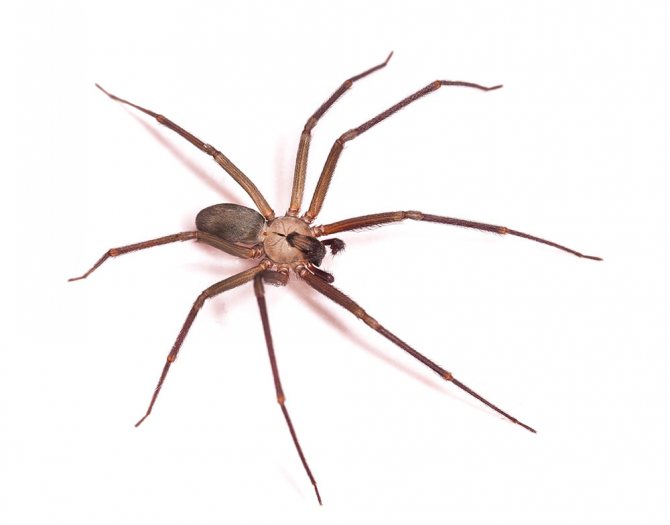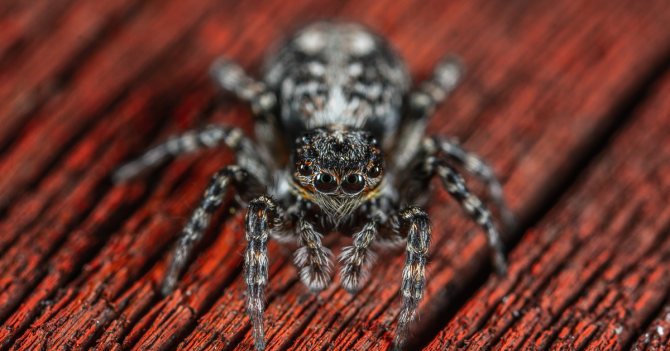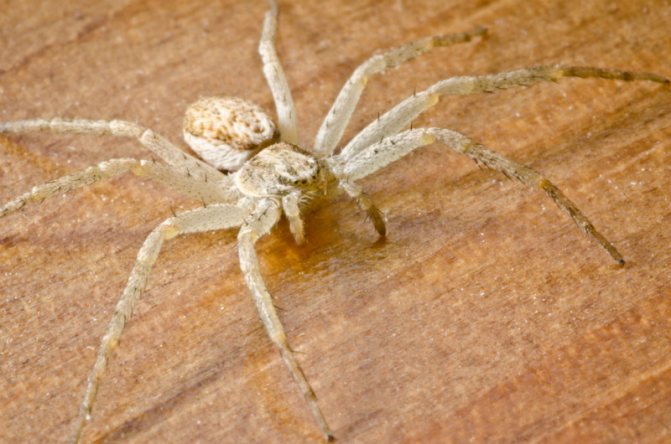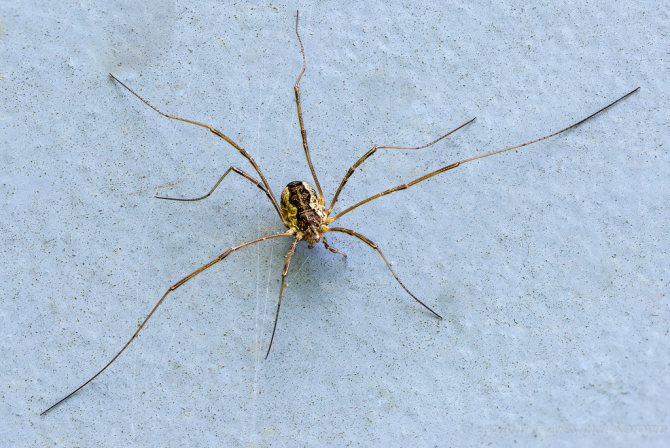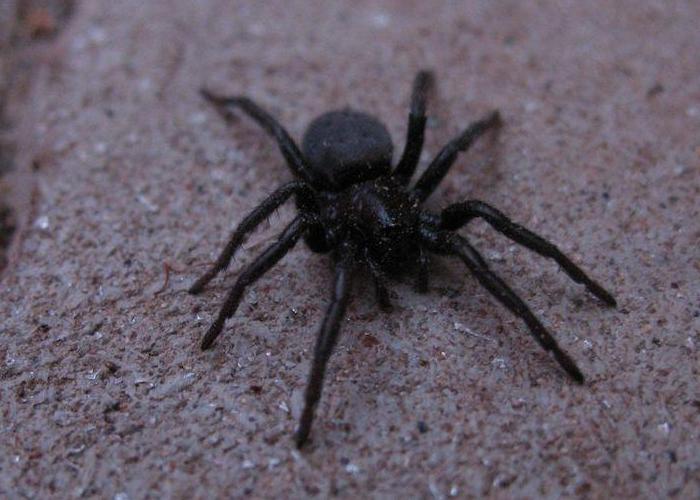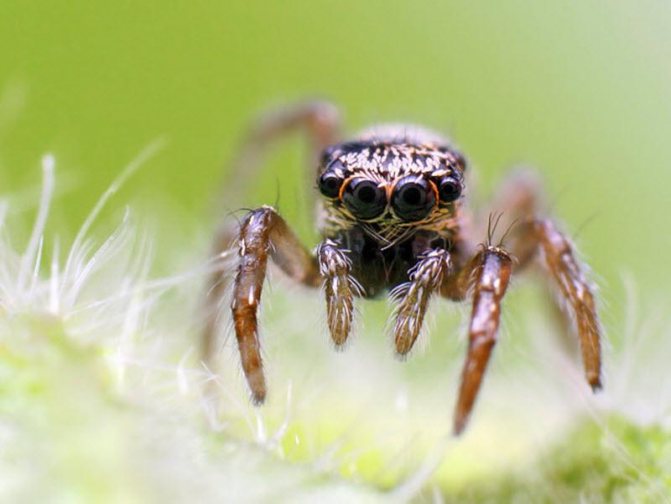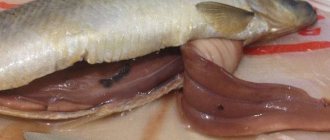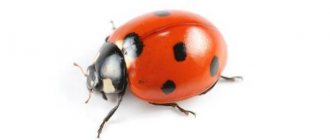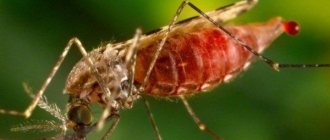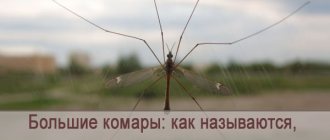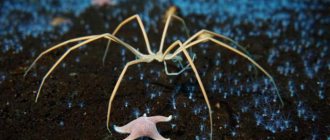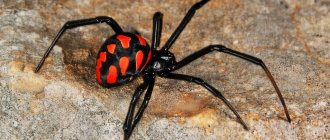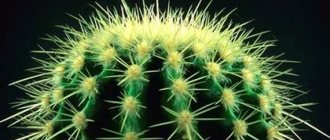Synanthropic bloodsuckers
The bulk of synanthropic species are temporary blood-sucking parasites. This group is highly mobile and spends most of its life in the external environment. Lice, fleas and bugs pester people in homes.
Fleas
Small black insects with a flat body, capable of jumping. Fleas are 1-3 mm long. In Russia, you can find 5 species of these blood-sucking insects:
- rat;
- doggy;
- rabbit;
- feline;
- human.
Flea species are morphologically very slightly different from each other. They feed on the blood of any mammal that turns up.
Parasites prefer to breed in humid, damp places, that is, in basements or bathrooms. In extreme cases, they will manage with a crack behind the baseboard, clogged with house dust.
In natural conditions, fleas are active around the clock in the warm season. In homes, they breed year-round. The normal lifespan of an adult is 2 months.
Bedbugs
Synanthropic bloodsuckers. A person is attacked by bed bugs and pigeon bugs.
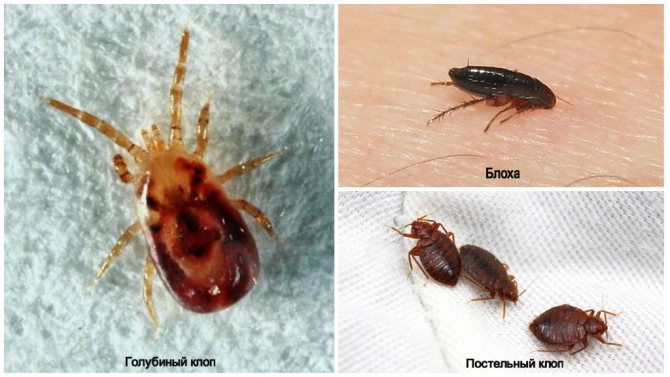
Blood sucking insects
Bed
The wingless blood-sucking insect is a parasitic companion of man. Bed bugs drink human blood with little interest in other objects. The neighborhood of bedbugs can be noticed only by the traces of bites on the body, since insects are active at night. Due to the fact that the bug spends most of its time outside the owner in a shelter, it is also a temporary blood-sucking insect.
Bedbugs are "suspected" of carrying blood-borne diseases. For example, hepatitis B.
Pigeon
Insects that suck the blood of pigeons, chickens and other birds. The appearance and lifestyle of the pigeon / bird and bed bugs are similar. Both are active at night, breed in secluded places outside the host and drink blood. But the pigeon usually lives in birds' nests and does not touch a person. Until the birds leave their home. Left without owners, the starving parasite crawls into the apartment and attacks a person. This is the danger of bird bugs: they transmit from birds many dangerous diseases that humans are susceptible to. These diseases include psittacosis.
Lice
Lice are permanent human parasites. These are small blood-sucking insects that spend their entire life on the host. Laying an egg, the louse sticks it to human hair. There are 3 types of human lice:
- head;
- wardrobe;
- pubic.
These two types of insects are very similar morphologically:
- long narrow body;
- elongated abdomen;
- the head is smaller than the cephalothorax;
- gray color of a hungry insect.
But the spheres of their habitat are different: the head one lives only in the hair, the wardrobe one lives in the folds of clothes.
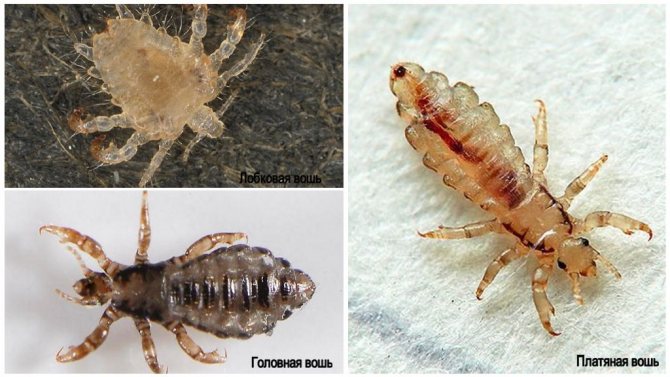

Blood sucking insects
The pubic differs from the two previous types in the shape of the body. She is "round". The body of the pubic louse is very short. It widens towards the front end and tapers towards the back. The shape of the body is more like a crab, a forest bug. Her habitat:
- groin area;
- armpits;
- eyebrows;
- eyelashes.
Pubic lice do not occur in other areas of the human body, unless they get there by accident.
Photos and names of domestic spiders
To understand the degree of danger of a spider, you need to know its species. The characteristics and traits of all arthropods that frequently inhabit human dwellings should be considered.
Haymaker
The haymaking spider often settles in window frames and in the corners of apartments and houses. They can often be found in attics. These creatures have an oval body, reaching about 1 cm in length. This species is distinguished by long beige or brown legs. The body is gray-brown. Haymakers weave a disorderly web.
Their number in residential buildings increases in the fall. Haymakers are extremely shy, so if disturbed, they try to hide quickly. When life is threatened, the spider can bite. These creatures are non-poisonous, therefore, they do not pose a danger to humans.
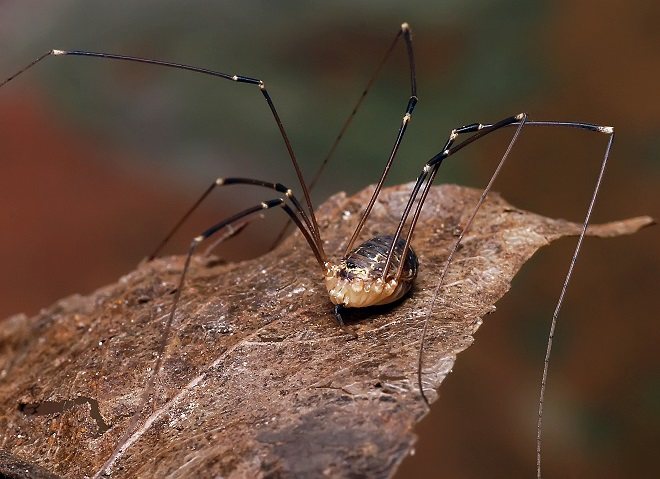

Black house spider
Black spiders are often found in the corners, on the ceiling and walls of apartments. The female of this species can reach 3 cm, while the males are 2 times smaller. They weave a tube-like web. The diet of black spiders includes not only flies, but also moths, butterflies, beetles and other insects that accidentally enter the living room. Living in a house, they rarely breed.
Spider tramp
Tramps are small in size. They rarely grow up to 1 cm in length. This arthropod species has 8 pairs of legs. The tramp's carapace is brown with black and beige patches. This brownie spider differs from its relatives in that it does not weave a web. This creature is constantly on the move. During the hunt, it quickly attacks the victim, injects its poison and eats it. The poison that this species of spider secretes is safe for humans.
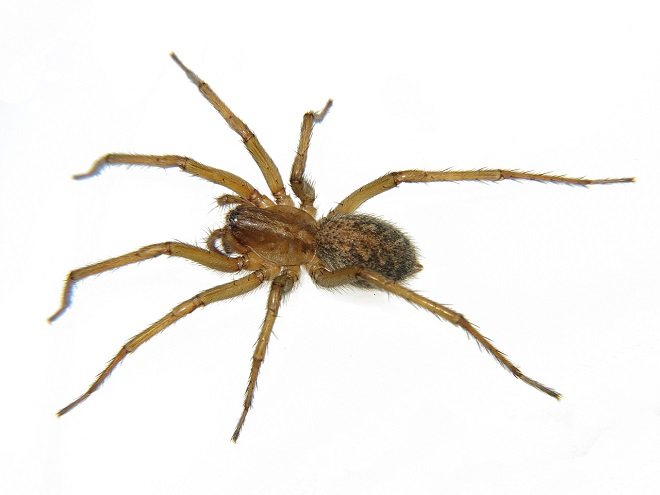

Skunkychik
Jumpers are relatively rare in apartments. In most cases, they are brought into the room on a person's clothing. The jumpers have a special structure of the legs, due to which they move, bouncing. In addition, this type of spider is able to move quickly on glass. The skip, unlike other species, has good eyesight. It has 8 eyes arranged in 3 rows. These creatures are safe. They do not emit poison, because consume only plant foods. Their diet is based on acacia.
White house spider
A simple white spider is also common in the house. The body length of females of this species reaches 1.5 cm, and males are much smaller. These arthropods weave large webs. Their poison is not dangerous to humans. At the same time, white karakurt are found in the southern regions of Russia. They have thin legs and a thick spherical body. White karakurt in a house or apartment are rare, but it is impossible to exclude them from entering the living quarters. The venom of these arthropods can cause allergic reactions and signs of intoxication.
What does it eat?
A representative of the described species is able to do without food and water for a long time. The spider hunts insects, including their larvae. But hermits do not disdain their own relatives and small vertebrates. Unlike most other species, hermits do not use cobwebs to catch victims.
Spiders watch out for hunting objects, significantly moving away from the nest. The killing is performed by injecting the toxin from special glands located on the cephalothorax.
We suggest that you familiarize yourself with: How room moth reproduces
The hunter does not resort to preserving the victim with a web, but immediately proceeds to processing the prey, tearing the flesh with his jaws and injecting gastric juice.
When hunting beetles, spiders expect the lethal effects of poison. After death, the victims begin to eat, turning the corpse into a comfortable position while eating.
Insect larvae
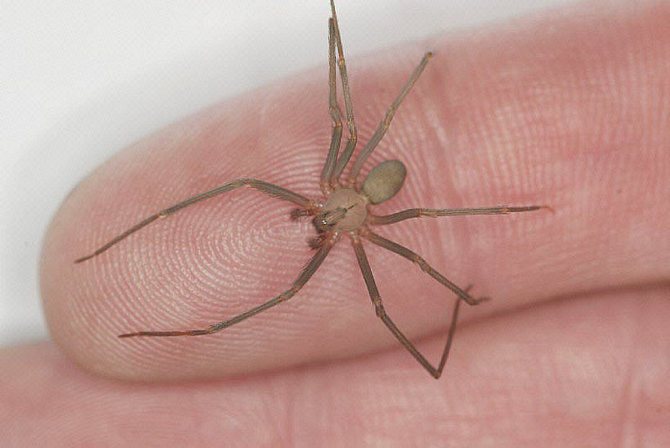

The easiest prey for hermits due to low mobility and lack of resistance.
Spiders are toothless predators. The catcher hides, guarding near one radius thread, connecting the body and the web. If an insect gets into the net, it sticks, twitches, and the predator feels the oscillation of the net.
It immediately attacks, injects a damaging poison and a substance that dissolves prey from the inside, at the same time entangling cobwebs with threads. After a while, the spider sucks out the contents of the victim.
Spiders in the apartment - species, photos
Almost all spiders are predators, their diet consists of small animals and insects. Most often, they hunt with the help of a web, when the victim is caught in the net, the spider injects poison and digestive juice into it, and after a while it sucks out the solution, which is food for them. Usually, the owners will know about the presence of a spider by the appearance of a web. They prefer warmth and dryness, as well as being disturbed as little as possible. Several species of spiders live in the neighborhood of a person. So, what kind of spiders live in an apartment?
Spider - haymaker
A long-stem, a window spider or a haymaker has a round or oval abdomen that is small up to one centimeter, 6 or 8 legs up to five centimeters long. Its nets are randomly located in the corners, near the windows, often hanging upside down. Insects, getting into the web, get stuck in it more and more. The spider lies in wait for the victim and, after injecting poison, leaves it in reserve or eats it.
Haymaker spider - photo
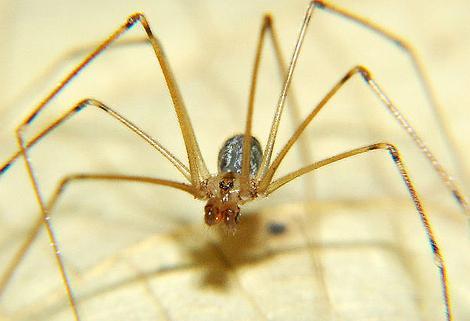

Gray and black house spider
Small spiders in the apartment are black or gray spiders. Their total size is about 14 mm. Their web resembles a pipe, after the victim damages the network, they restore it, so often you can see not just a mesh, but complex weaving patterns. As a rule, the female is waiting for the prey.
Black spider - photo
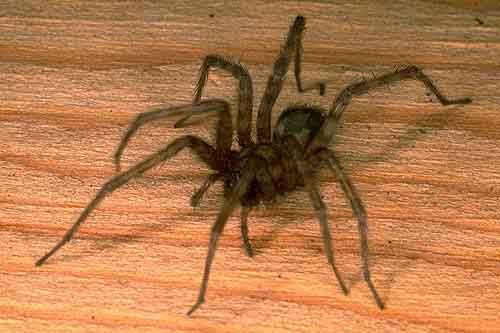

Spider - tramp
The tramp has an oval body and large legs. A distinctive feature of the species is the absence of cobwebs. The spider attacks the victim, injects its poison, eats it and goes on. He does not stay anywhere for a long time. In Russia, this type of spider is safe, and in the tropics, the secret secreted from their glands leads to poisoning and skin problems.
Spider - tramp, photo
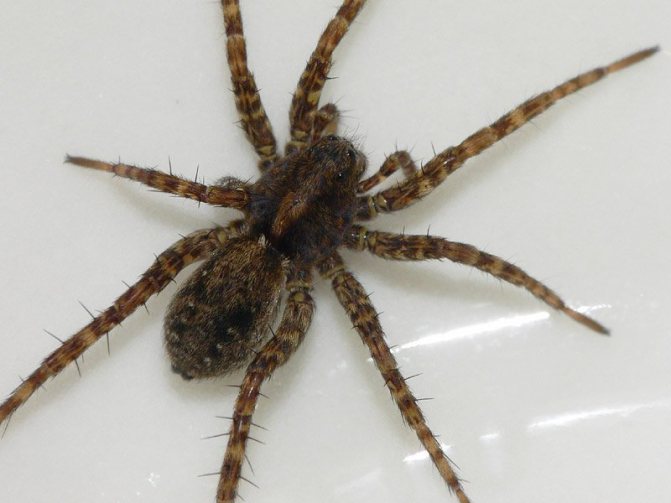

Jumping spider
If a jumping spider is wound up in the apartment, this is a jumping jack. Its difference is that it has 8 eyes, arranged in three rows. The pattern on the body is varied, as well as the colors. Easy to move on glass, thanks to small claws and hairs on the legs. By the way, he is a vegetarian and only eats acacia.
Spider - jumping, photo
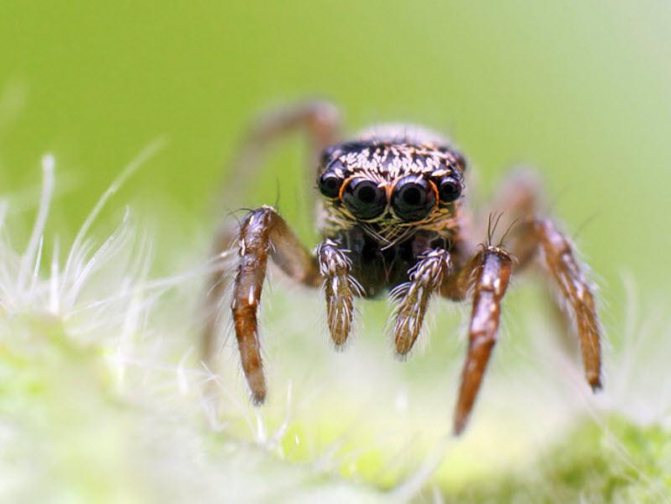

The rest of the species of these arthropods are very rare in houses and do not settle next to humans.
Where do spiders come from in an apartment
Why do spiders appear in the apartment? Most often, they enter the house through various cracks. Or we bring it indoors on our clothes. But if there are a lot of spiders in the apartment and all the corners are entwined with cobwebs, you should think about why they live so well here. Insects prefer to live where there is a lot of food for them - flies, bugs, moths, cockroaches and other small parasites.
In old houses, spiders occupy attics and basements, and from there they make their way into other rooms.
Are spiders dangerous
All (with rare exceptions) spiders are poisonous. But the harm from the bites of spiders living in our apartments for humans is minimal, thanks to the small fragile structure of the body and small fangs. After a bite of a karakurt, the human body will undergo neurotoxic effects. And the biggest danger from domestic species is necrosis. But most often, neither inflammation nor intoxication occurs. The bite site only needs to be treated with an alcohol-containing agent or hydrogen peroxide.
Lifestyle
The house spider sits in a secluded place during the day, hides away from the sun's rays, and goes hunting at night. Uses trapping nets or does without them. In the first case, the spider pounces on its prey, which is accidentally entangled in a web. The predator injects poison, its own saliva. The first substance paralyzes the victim, the second liquefies the insides, which are then sucked out by the house spider. After a while, it throws a funnel, forms a new one in another place.
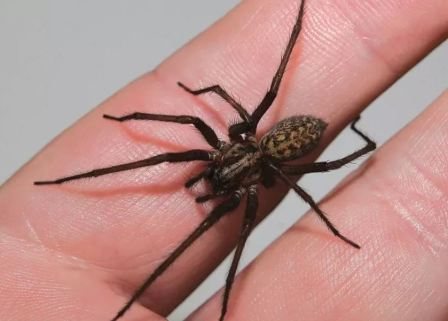

The second method of hunting also involves the use of spider webs, but without trapping nets. The spider stretches out only 2 thin threads, it sits in a secluded place itself. As soon as the prey touches them, the predator rushes to attack with lightning speed. The main diet consists of flies, fruit flies, mosquitoes, wasps, bees, as well as cockroaches, ants.
Reasons for appearing in the apartment
The main reason for the appearance of an arthropod in a person's home is the presence of food. Suitable living conditions are also important:
- Many predators in the house can be seen in the fall. They are attracted by the favorable temperature, because the apartment is warmer than outside.
- Depending on the type of arthropod, it can be seen in both dry and humid places. The level of air humidity also affects the choice of habitat - heat-loving spiders settle in the kitchen and in the bedroom, and lovers of cold and dampness prefer to live in the basement or bathroom.
- Insects most often appear in rooms where cleaning is rarely done. It is in such rooms that arthropods actively reproduce and feed.
Predators enter the house from the street and linger in it if the living conditions are favorable. In the absence of food, the spider leaves the dwelling and goes in search of a new one. The most likely places for arthropods to enter the apartment:
- furniture stored outside for a long time;
- garden or wild flowers, herbs brought into the house;
- Street clothes;
- open windows, doors and crevices in the floor and walls.
A large number of spiders appear due to their active reproduction. In this case, it is necessary to take measures to eliminate arthropods from the home. Chemicals, ultrasonic devices, adhesive tapes help to get rid of them, and they also avoid places where the smell of wallpaper glue, paint, citrus and mint reigns.
Features of behavior
The name "hermit" is explained by the solitary lifestyle. The animal is active at night, preferring solitary hunting. The hermit's web does not differ in an orderly pattern, is extremely sticky to the touch, made of randomly spaced white threads.
In wild nature
The hermit spider lives in warm climates, but is able to survive frosts up to 35 degrees, hiding under a stone or log. Arthropods live in woodlands and open spaces, preferring dry and secluded places.
In a private house
The domestic hermit spider can be found in secluded corners - in the attic, in the basement, under the bathroom, in crevices and inaccessible places. House spiders also live in utility rooms - garages, sheds, barns.
Often, arthropods penetrate bedding, nest in wardrobes, inside beds and nightstands.
Types of domestic spiders
Spiders are predators by nature. They live all over the world, except Antarctica. Insects feed on other arthropods or smaller animals.
Of all the species of spiders (more than 42 thousand), only a few are able to survive in humans at home.
It is difficult to notice the presence of arthropods, since they prefer to settle in secluded corners of the apartment: behind furniture, under window sills, on the ceiling. You can recognize the type of insect by its distinctive external features and features of the web.
Haymaker
The haymaker is called in another way a window spider, a centipede. The body size of the animal does not exceed 1 cm. Domestic spiders differ from other types of arthropods by the presence of long legs.
The color of the insect varies from red to brown. The abdomen of the haymaker is slightly darker than the back. The individual weaves a web chaotically and more often settles in attics, in the corners of rooms, on windows.
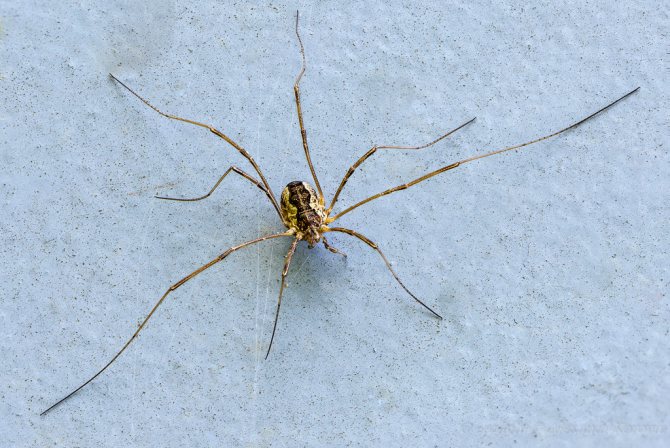

During the day, the insect can be seen on the wall with its legs spread out to the sides - this is how the animal bask in the sun. An individual attacks people only if there is a threat to his life. The bite of a haymaker is not dangerous to humans, since this type of insect is not poisonous.
Females of centipedes lay eggs in the fall or summer. They weave egg cocoons from their own webs. Larvae emerge from eggs in 2-3 weeks. The larvae resemble an adult haymaker, but differ in lighter shades.
The braid lives up to 12 months.
Black house spider
The usual habitat of the insect is trees. An animal can get to a person with a stream of wind through open doors and vents. Animals enter the dwelling by moving along the walls.
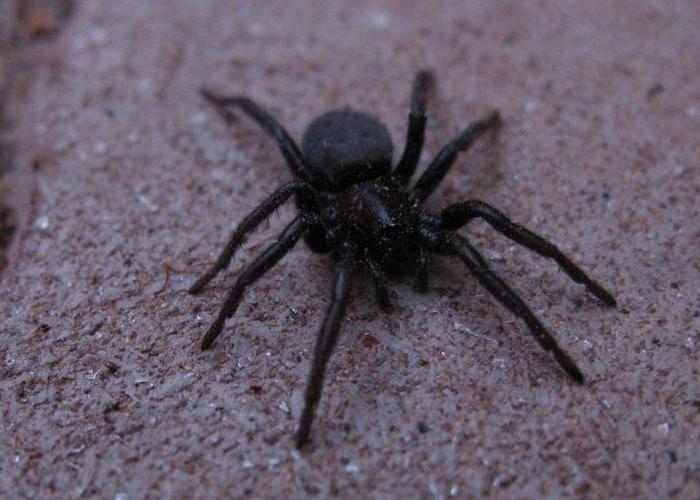

Females of the black domestic spider are larger than males: they grow up to 3 cm (taking into account the spread legs).
In the rooms, insects hide in the corners, behind furniture. In appearance, the spider web resembles complex messy patterns. Animals feed on other small insects: moths, cockroaches, beetles, butterflies.
Black spiders cannot actively reproduce outside the will. Their activity fades away with the onset of winter. Wet cleaning will help get rid of the problem in the apartment.
Spider-tramp
The domestic spider betrays its presence only by the cobweb. He does not appear in bright places of the apartment, but prefers dark corners.


Arthropods fall from the street by accident: through open windows and doors. Tramp spiders have a brown body color and powerful long legs. The insect has dark stripes on its legs.
Females of the species are always larger and more agile than males. The average lifespan of vagrant spiders is 2 years, but in captivity they live much less.
Females are able to reproduce only in nature (once a year). In the apartment, the reproduction of arthropods stops.
Jump
In total, there are 6 thousand species of jumping spiders. They got their name from the ability to jump. Unlike congeners, individuals have good eyesight and catch prey not only with the help of cobwebs.


The color of the insect has a varied range. The house spider has a flattened abdomen, raised cephalothorax and massive paws. Animals live in trees and bushes. Just like the rest of the spiders, it gets into the house by accident.
Jumpers are the few arthropod species that do not weave webs. They hunt during the day.
Jumping females lay eggs in large numbers. To do this, they weave a special cocoon. An adult protects its nest until the larvae are born.
White house spider
One of the most dangerous spiders living in Russia is white. House spiders live in the south of the country and are called in another way karakurt. The insect is capable of entering people's homes in the summer.


A bite of karakurt causes negative reactions in a person: allergic skin rashes, swelling and swelling of the damaged area of the epidermis.
Haymakers
Haymakers, they are creepers, they are window spiders - these are red or brown domestic spiders, with a small 1 cm dark abdomen and 5 cm long legs. Cobwebs entwine the corners in rooms and like to bask where the sun warms up.
For people, the haymaker is not dangerous - he will attack only if he is frightened, but more often he runs away. They climb into houses during nighttime cold snaps. In summer and autumn, the female makes clutch and entangles with cobwebs. After 14-20 days, light little spiders come out.


Wet spring cleaning will help drive out unwanted occupants.
Reproduction
Tegenaria home leads a solitary lifestyle, gathers in pairs only during the mating season. The male searches for the female's web, neatly approaches, pulls the threads. The female, at the sight of a "boyfriend", either rushes to attack, or sits motionless in the center of the funnel. The second option means that the lady is ready to accept the gentleman. After mating, the couple is together for some time. Then the most important thing for the male is to leave in a timely manner, otherwise he will simply be devoured.
A few days later, the female begins to weave a cocoon from the web, lays eggs there, and hangs it from the funnel, where she lives.Cubs develop for about 20 days, all this time tegenaria protects them. About 50 spiders are born. They stay together for about 2 weeks, their mother feeds them, then they crawl in different directions.
Danger to humans
House spider venom is toxic to small insects. Paralyzes almost instantly, death occurs within 10 minutes.
On a note!
The predator does not attack animals, people. Tegenaria is calm, prefers to run away, hide, rather than attack. However, when threatened to its own life, it can bite. The situation occurs if a person accidentally crushes a house spider.
A spot, swelling, slight swelling, irritation remains at the site of the bite. The condition will return to normal on its own in a few days. There is no great harm from the poison of tegenaria. The arthropod simply annoys with its presence, reminds us that general cleaning has not been done in the house for a long time. In non-residential premises, the dimensions of the cobweb are such that they cover the space from top to bottom. It is not difficult to get rid of spiders in the house - cleaning is enough, and in case of a mass invasion, the use of insecticidal agents.
How to get rid of spiders
Before thinking about how to get rid of spiders in the house, you should find out who serves as a source of food for them, who needs to be taken out for the company with arthropods. Spider control is not always done with pesticides. Try simple and effective methods to get started, as they do not form colonies and do not reproduce at a record rate.
- Find out the cause of the spiders and start fighting small insects.
- Remove the cobwebs with a broom or vacuum cleaner. Do not forget to shake out the contents of the bin outside, otherwise the spider will get out and continue to weave its nets. The simplest device for collecting cobwebs is a stick with a rag wound around it.
- If there are too many spiders, they managed to lay eggs, which should be looked for in secluded places, for example, on furniture from the side of the walls. Sweep them out and flush them down the drain.
- Fill cracks and crevices, glue wallpaper where necessary, install mosquito nets and nets on the ventilation grilles.
- Regular cleaning will prevent the appearance of spiders.
- After repair, usually not a single spider remains, since the smell of paints and varnishes is unbearable for them.
- Pungent smells of chestnut, hazelnuts and oranges, mint, eucalyptus scare off spiders. You can crush the fruits and scatter them around the room, or add drops of the substance to the spray bottle and spray the apartment regularly.
- Scatter diatomite on the baseboards, getting on this substance, the insect quickly dies.
- Ordinary vinegar is highly effective. Add a few drops of vinegar to the water, pour into containers and place around the apartment.
Spider chemicals in the apartment
If the number of spiders in your home has become alarmingly high, chemicals are essential. Universal spider sprays are ineffective. Use household pyrethroid medications. Be careful when spraying, do not forget about safety measures and follow the instructions. Also remember that the poison only works when it gets on the spider's body.
A well-proven remedy that is suitable for combating spiders - "Dobrokhim FOS". The drug is an acaricidal agent that allows you to destroy arachnids with a 100% guarantee. The product is safe for people, but acts on insects with lethal force.


Easy to use "Butox 50". The drug is sprayed where there are a lot of spiders, left for 20 minutes, then the room is ventilated and cleaned. If you decide to use "Neoron", be careful, it is very dangerous to use it near food products.
It so happens that the use of aerosols is impossible for any reason - small children, pets, and so on. Then it is advisable to use pills - traps, inside which the poison is placed.In addition to other methods of struggle, it is recommended to place glue traps in corners, behind cabinets, under low furniture.
To prevent such a problem as there are many spiders in the apartment, regularly carry out high-quality cleaning, ventilate and knock out mattresses and pillows - so there will be less dust at home. Rinse out lighting fixtures, pay more attention to hard-to-reach places - in corners, under furniture, in closets, especially if you rarely use them. And remember that the spider is more of a useful creature than a pest, so let all methods of struggle be sparing.
Big spider in the apartment
Three reasons why spiders are useful
- Pests such as cockroaches, earwigs, mosquitoes, flies and moths are eaten. If you let them work, they will kill most of the insects in your home. It is an excellent safe weapon against insects.
- They eat other spiders. Meetings with rivals often end in "gladiatorial" fights, in which the winner eats the loser. If your basement has a lot of long-legged tenants, you can see that the population initially consists of many small individuals, and subsequently shrinks to fewer large ones. In addition, there are significantly fewer other insect pests in the basement, which makes spiders great allies of man.
- They limit the spread of diseases, as they eat many domestic pests, carriers of infectious and other diseases: mosquitoes, flies, fleas, cockroaches and many others.
Plus, they live in places that are free of toxins and clean enough to be a determining factor in your home.


Amarobiid, like other spiders, rid the home of harmful insects
How to get rid of spiders
While many of us would rather see spiders dead than alive, do not forget that he was once Arachne, albeit mythological, and that spiders are useful. Instead of poisoning yourself and their chemistry, forcing them to die, beat them with a shoe or newspaper, it is better to catch them, which is easy enough (in a disposable cup or other container) and release them far from home, let them look for another place to live.
Controlling the spider population
- Seal any crevices and holes through which spiders can enter the house.
- Make sure there is no rubbish in the immediate vicinity of the house.
- Pack your souvenirs, clothes, and nice little things in sealed plastic containers. Cardboard boxes attract insects, which attract spiders.
- Store wood some distance from your home to avoid bringing spiders into your home.
- Use insecticides where they spin their webs.
- Deal with insect food sources of spiders with insecticides and other methods.
- Consider creating a chemical barrier around your home with a suitable reagent.
Safe views
Arachnid predators prefer to hunt insects, waiting until the prey gets caught in the net or there is a chance to attack the prey directly. The bites of the predators described below do not pose a serious danger to humans. They can be found both on the street and in residential buildings.
Spiders safe for humans:
- brownies;
- knitters;
- orb-webs;
- argiopa.
Let's consider each type in more detail.
House spiders are beneficial for the most part. They hunt for pests that are undesirable for humans: mosquitoes, flies, wasps and other insects. Many are frightened off by the impartial appearance of the arthropod and the ubiquitous web.
House spiders
The scientific name of the species is Tegenaria agrestis spider. Predators prefer to settle in living quarters and outbuildings. The main food source of the house spider is moths, mosquitoes, cockroaches and other small insects.
In the apartment, he takes refuge in the cracks between the walls, under the window sills and baseboards. Dense grass and woody remains serve as natural shelter in nature.The habitat of representatives of this species is from western Siberia to the Crimea. They can also be found in European countries.
The spider's body is dark in color with a yellowish tint. The original brown pattern can be seen on the back. The male is about 0.7 cm long, while the female is noticeably larger - about 1.2 cm. The legs of the predator are almost twice as long as the body.
The spider weaves a funnel-shaped web, preferring windows and corners under the ceiling. The predator always expects prey at the center of its network. When the victim falls into it, he moves to her with lightning speed and injects a deadly poison.
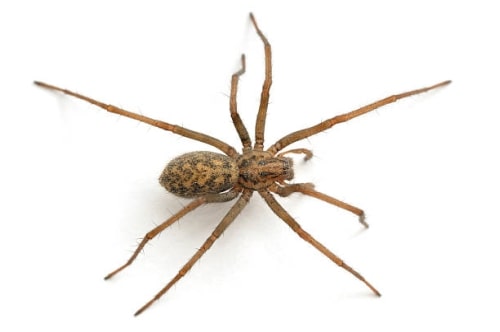

Knitters
The common name of the species is Tetragnathidae. The forest spider is notable primarily for its long legs, which are almost 10 times the size of the body. The latter has an oblong shape and dark color, while the rest of the predator got a pronounced yellow color.
Females are noticeably larger than males, and their abdomen reaches a length of 3 cm.The elongated body acts as a defense mechanism. When danger approaches, the spider snuggles to the surface and looks more like a dry twig, rather than an arthropod predator. If disturbed, it unhooks from the surface, falls to the ground and quickly retreats to safety.
The spider weaves extensive nets and moves rather briskly along them by means of its long legs. Victims caught in the web are immediately immobilized by the poison. The predator releases illiquid insects by gnawing off part of the net.


Spider knitter
Orb weaving
The scientific name of the individual is Araneidae. The spider prefers to live in the crowns of standing and fallen trees, placing its nets between the branches. The attractive outwardly wheel-like web has ideal shapes and immediately distinguishes representatives of this species from others.
The orb weaving venom is fatal to insects and small vertebrates. It can cause serious harm or even kill small rodents. Cats, dogs, horses and other large animals no longer react to it.
For example, after being bitten by a spider, a frog stops moving after 15 minutes, and the locust dies after half an hour. While a person experiences only a faint echo of pain, even with an abundant injection of poison. The most you can count on is an extensive allergic rash in people with weak immune systems.
Spiders of this species are highly voracious. In one hunting cycle, they can eat up to 8-10 flies or mosquitoes. If there is an illiquid victim in the nets, then the predator simply chops off the nets and it falls to the ground. In a similar way, the spider cleans the cobweb from the remnants of the feasts.
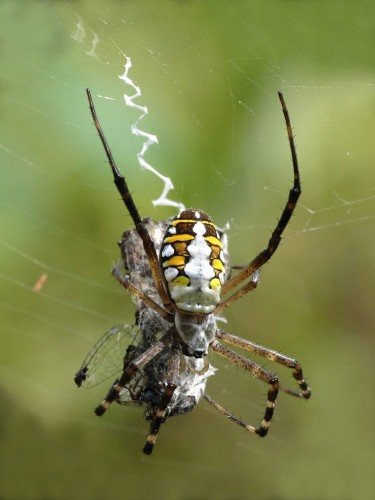

Argiopes
The common name of the species is Argiope. The spider attracts primarily with its original appearance. The predator has a bright color of black and yellow stripes, which makes it look like a wasp. Short hair can be seen on the head and chest. Females are 5-6 times larger than males and can reach a length of 3 cm. Long legs consist of a large number of articular areas.
The habitat of the agriopa is the middle zone of Russia. They are also found in other areas with a temperate climate, most often in the Stavropol Territory. A spider bite is very stinging and is comparable in pain to a bee bite. Argiopes prefer to exist alone and approach their compatriots only for mating.
A predator will never be the first to attack a person, unless the latter shows obvious aggression. A small allergic rash appears at the site of the bite, which is accompanied by mild pain. The swelling goes away in about 2-3 days.
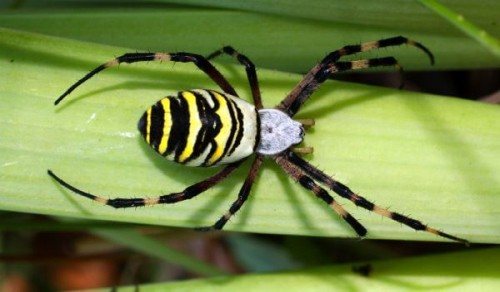

Chemical preparations for arthropods - which ones to choose?
Considering how long spiders live (usually no more than a year), one might think that it is pointless to fight them. Nevertheless, one must remember about the ability of arthropods to actively reproduce.The new generation of spiders will replace the old one so quickly that it will be almost impossible to achieve cleanliness in the house without cobwebs and dry bodies of their victims without special means.
The most effective chemicals are:
"Butox 50" is a simple and affordable product, easy to use. Apply it after carefully studying the instructions on the package. To achieve the result, it is enough to spray the surfaces where spiders are often found, first preventing the flow of clean air through the windows and doors. After the end of the action of the agent, the room is ventilated.
The drug "Nero" enjoys well-deserved trust among specialists. Just as in the previous case, it is necessary to study the instructions for using the tool
In places where food, children's toys, utensils are stored, the product is used with extreme caution, protecting vulnerable things and products with film
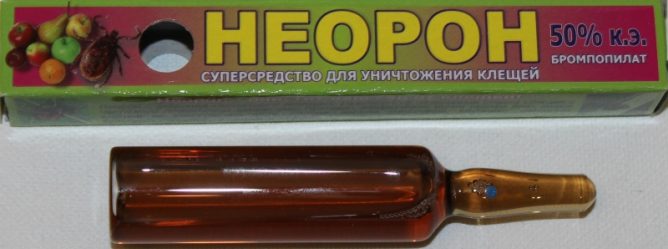

An alternative to aerosols often with a pungent odor will be tablets, they are also traps. Produced in dry form, they lure spiders, after which they are poisoned with poison. The method is simple and effective, but far from humane.
Should you be afraid of spiders?
All spiders are predators. The exception is the jumping spider, which feeds on acacia greens. Many of these pests are poisonous. But for humans, only a few species out of more than 40,000 are dangerous. They live mainly in Australia and America. The most poisonous and deadly one is the “black widow”.
The rest of the species cannot harm humans. Their bites are no worse for people than an ordinary wasp. And house spiders won't do any harm at all. For many, the mere sight of these creatures is unpleasant, while others take them as pets and sincerely admire the beauty of these creatures.
If you are bitten by an unknown spider, you should immediately go to the hospital.
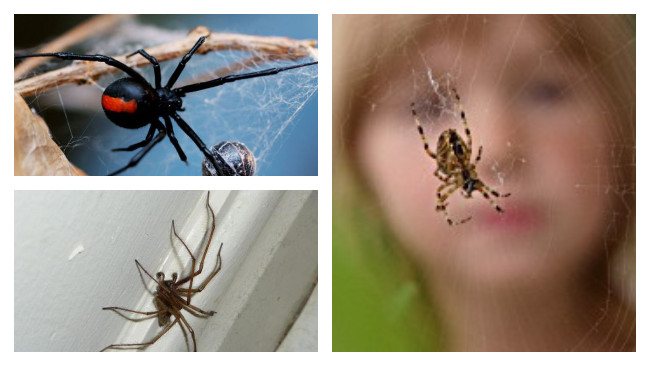

Varieties
There are three main varieties of Loxosceles reclusa, as this arthropod species sounds in Latin.
The black
Presumably occurred as a result of crossing a black widow with a brown recluse spider. The most poisonous of all types. They live in the depths of dungeons and crevices. A popular character in a well-known computer game, characterized by a special degree of danger to the player.
Brown
The most common variety. They originally lived in Latin America, from where they spread throughout the world since the 70s of the last century. We have adapted to the conditions of existence next to a person.
Chilean subspecies. Less toxic, common in Chile and Hawaii.
In the southern latitudes of Europe and in Russia, Mediterranean hermit spiders live, which are distinguished by a red-brown or yellowish color. The degree of danger of the poison of this species of arthropods needs additional study.
How do house spiders breed?
When the mating period begins, the male starts looking for the female. He steps into her web and waits for her to come. At this stage, the male needs to be careful, since there is a possibility that the female will attack and kill him.
The male steps on the edge of the web and stands on its lower side, when the female appears, he crawls upward. If she does not attack, then the male begins to slowly approach her.
The male remains cautious and watches over the female, if she shows aggression, then he immediately runs away. If the male manages to approach the female, then he touches her front leg, then the mating process takes place
After a while, the female makes a clutch. She lays her eggs in several flat cocoons and hangs them from a web. When young animals hatch from eggs, they live with their mother, who teaches them how to hunt. When the grown spiders can get food on their own (this happens after about a year), they settle separately from the female.
Types of domestic spiders
Spiders are predators that belong to the order of arthropods.The main food for them is living insects, and arthropods live on every continent except Antarctica. Of the thousands of known species of spiders, no more than a dozen species live at home.
Some spiders prefer to live at home. They settle in dark corners, when a person appears, they hide in shelters, so they are difficult to notice with the naked eye. By the appearance of an arthropod and the type of its web, you can determine its appearance. The most common types of house spiders are:
- tramp;
- gray and black;
- centipedes.
The tramp got its name because of the constant travel from one house to another. The spider does not stay in the apartment for a long time, and also does not weave a web. He overtakes his victim with a jump and instantly injects a paralyzing poison into it. This representative of arthropods has a thin elongated abdomen, long legs. The scope of the predator's paws does not exceed five centimeters.
Gray and black arthropods settle in dry warm places and rarely leave their habitat. They weave a structured little web with which to catch insects. Their body has a length not exceeding fifteen millimeters, and the color is completely gray or black, hence the name of the same name.
The long-leg is also called the haymaker or window spider. The haymaker's habitat is the corners of the windowsill. The peculiarity of this type is a small dark body and long thin legs. Long-stemmed after each eaten prey, spins the web, which makes it look chaotic.
Spiders in the apartment eat like this: they wait until flies, bugs, cockroaches get entangled in a woven web, inject special poison and digestive juice into the victim. The insect dies, the predator sucks out its digested insides.
Domestic arthropods do not form populations; they breed in small numbers. If the predator does not have enough food, then the offspring appear only at the end of its life cycle. Life expectancy depends on the species of arthropod, but it usually ranges from two to six months.
Habitat
In the natural environment of Tegenaria, the brownie lives among plants and trees. You can find it under the bark, fallen leaves, snags, hollows, between tree branches, in the grass. Builds trapping nets near his hideout. The web resembles a funnel, hence the name of the species. However, premises for different purposes are preferable for him. Therefore, it is often called the house spider.
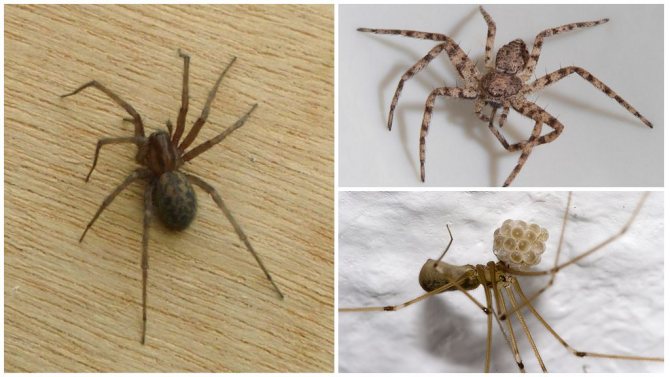

House spider (Tegenaria domestica)
The indoor spider settles in the corners, below, above, behind furniture. Weaves a flat triangular web. A funnel leaves from it, from the very center. The owner sits in it. The attic spider can braid everything around, starting from corners, pumping with beams, windows, walls. One web connects to another, long threads extend from it, along which the predator moves around the room.
The house spider often settles in cellars, sheds, garages, and household premises. Absolutely wherever he is not disturbed for a long time. Weaves a web at night, during the day, trapping nets are ready to catch potential victims. The threads sparkle in the sun, attracting the attention of insects.
Gnus
In addition to the Sinanthropus, there are bloodsuckers who have not left their natural habitat, although some of them can also live in the city. Most of these insects are united by the concept of "gnat". The set of blood-sucking flying organisms "gnus" are insects with two wings of different sizes, united only by the need to drink blood for reproduction. The set of gnats includes:
- horseflies;
- autumn burner;
- mosquitoes;
- midges;
- biting midges;
- mosquitoes;
- tsetse flies.
The very concept of "gnat" came from Siberia, where this word was used to refer to small blood-sucking insects.
Blind
The largest flying blood-sucking insects in Russia. These are flies that require blood to drink to reproduce.Horseflies live in forest, steppe and desert zones. Most species keep near water bodies, since the development of larvae takes place in a humid environment. Only females drink blood. In addition to the pain of a horsefly bite, insects are dangerous because they carry infectious diseases. This family is actively sucking in the daytime. They prefer heat. In the early morning and at dusk, they do not disturb the animals.
Autumn burner
A small fly, very similar to a brownie. The two are often confused. But the brownie does not belong to the bloodsucking. A distinctive feature of the autumn burner is that it is an insect that drinks blood differently from other bloodsuckers. The burner does not pierce the skin, but scrapes off the top layer and licks off the emerging liquid. In parallel, she releases poisonous saliva that thin the blood.
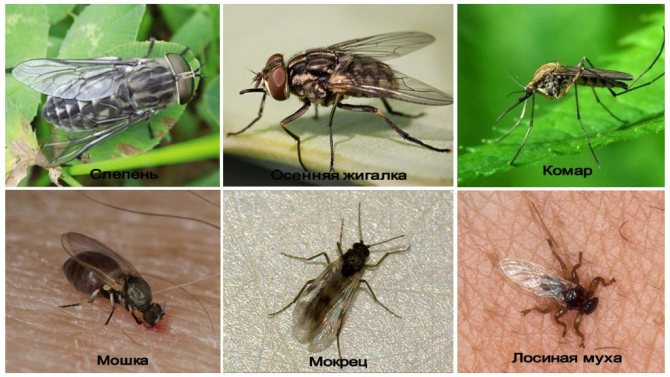

Blood sucking insects
Mosquito
The most famous insect is a bloodsucker. Even city dwellers are familiar with it, as often these blood-sucking dipterans breed right in the basements of houses. There are many types of mosquitoes, some of them are completely harmless. Of the blood-sucking mosquitoes, females are engaged in parasitism. Without a portion of blood, the mosquito will not be able to lay eggs. Mosquitoes actively hunt at night.
Midge
Small Diptera insects, included in the aggregate "gnus". The midge lives on all continents. Females are blood-sucking, males feed on nectar. Leaves more severe swelling than mosquitoes. The midge does not pierce the skin, but cuts it. He injects saliva with anticoagulants into the wound. Insects are active in calm weather at a temperature of 8-30 ° C. It blows them away in windy weather. Midges carry many diseases that are dangerous to humans.
Borers
Very small insects are bloodsuckers, outwardly resembling mosquitoes. They live everywhere except Antarctica. Mokrets is the name of the family, not the species. There are genera in the family that feed only on nectar or are predators. There are also genera where females are bloodsucking and males are "vegetarians". Females from blood-sucking species are included in the aggregate "gnus". Insects are capable of carrying infectious diseases.


